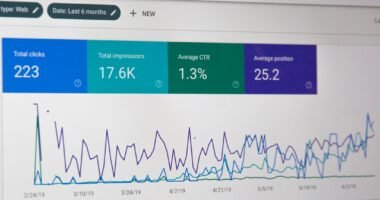Social media marketing has emerged as a cornerstone of modern business strategy, transforming how brands engage with their audiences. With billions of users across platforms like Facebook, Instagram, Twitter, and TikTok, businesses have unprecedented access to potential customers. This digital landscape allows for real-time interaction, fostering relationships that were previously unattainable through traditional marketing channels.
The dynamic nature of social media not only enables brands to promote their products and services but also facilitates the gathering of invaluable consumer insights. The evolution of social media marketing has been rapid, driven by technological advancements and changing consumer behaviors. Brands are no longer just broadcasting messages; they are engaging in conversations, responding to feedback, and creating communities around their products.
This shift has necessitated a more strategic approach to marketing, where understanding audience preferences and behaviors is paramount. As a result, marketers are increasingly relying on data-driven strategies to optimize their campaigns and ensure they resonate with their target demographics.
Key Takeaways
- Social media marketing is a powerful tool for businesses to connect with their audience and drive engagement and sales.
- Math plays a crucial role in social media marketing, from calculating ROI to analyzing data and making strategic decisions.
- Data analysis is essential for managing influencer databases and identifying the most effective influencers for a brand’s target audience.
- Understanding algorithms and analytics is key to creating successful social media campaigns and reaching the right audience.
- A/B testing allows marketers to compare different strategies and determine which one is more effective in achieving their goals.
- Statistical analysis helps in segmenting target audiences and creating personalized and targeted marketing campaigns.
- Leveraging math is essential for successful social media marketing, as it allows businesses to make data-driven decisions and optimize their strategies for better results.
The Importance of Math in Social Media Marketing
The Role of Mathematics in Social Media Marketing
Mathematics plays a crucial role in social media marketing, serving as the backbone for data analysis and decision-making processes. From calculating engagement rates to analyzing conversion metrics, mathematical principles help marketers quantify the effectiveness of their strategies. For instance, understanding the return on investment (ROI) from social media campaigns requires a solid grasp of mathematical concepts.
Applying Mathematical Concepts to Marketing Strategies
Marketers must analyze costs associated with ad spend, content creation, and influencer partnerships against the revenue generated from these efforts. Moreover, mathematical models can be employed to predict future trends based on historical data. By utilizing statistical techniques such as regression analysis, marketers can identify patterns in consumer behavior and forecast how changes in their strategies might impact engagement and sales.
Predictive Capabilities and Business Growth
This predictive capability is invaluable in a fast-paced environment where consumer preferences can shift rapidly. Thus, a strong foundation in mathematics not only enhances the accuracy of analyses but also empowers marketers to make informed decisions that drive business growth.
Utilizing Data Analysis in Influencer Database Management

In the realm of social media marketing, influencer partnerships have become a powerful tool for brands seeking to expand their reach and credibility. However, managing an influencer database effectively requires robust data analysis capabilities. Marketers must evaluate various metrics such as follower count, engagement rates, audience demographics, and content relevance to identify the right influencers for their campaigns.
This process involves sifting through vast amounts of data to pinpoint influencers who align with the brand’s values and target audience. Data analysis also plays a pivotal role in measuring the success of influencer collaborations. By tracking key performance indicators (KPIs) such as impressions, clicks, and conversions generated from influencer posts, marketers can assess the impact of these partnerships on overall campaign performance.
Advanced analytics tools can provide insights into which influencers drive the most engagement and sales, allowing brands to refine their influencer strategies over time. This data-driven approach not only maximizes the effectiveness of influencer marketing but also ensures that brands allocate their resources efficiently.
Understanding Algorithms and Analytics for Effective Social Media Campaigns
| Metrics | Data |
|---|---|
| Engagement Rate | 10% |
| Reach | 5000 |
| Impressions | 15000 |
| Click-Through Rate | 5% |
| Conversion Rate | 2% |
The algorithms that govern social media platforms are complex and ever-evolving, making it essential for marketers to stay informed about how these systems operate. Each platform employs its own algorithm to determine which content is shown to users, based on factors such as engagement history, relevance, and recency. Understanding these algorithms is critical for crafting content that not only reaches the intended audience but also encourages interaction.
Analytics tools provide marketers with insights into how their content is performing within these algorithms. By analyzing metrics such as reach, impressions, and engagement rates, marketers can gauge the effectiveness of their posts and adjust their strategies accordingly. For example, if a particular type of content consistently garners higher engagement rates, marketers can prioritize similar content in future campaigns.
Additionally, A/B testing different post formats or messaging can yield valuable data on what resonates best with audiences, further enhancing the effectiveness of social media efforts.
The Role of A/B Testing in Social Media Marketing
A/B testing is a fundamental technique in social media marketing that allows brands to compare two variations of a campaign element to determine which performs better. This method involves creating two versions of a post—Version A and Version B—and distributing them to similar audience segments. By analyzing the performance metrics of each version, marketers can identify which elements contribute to higher engagement or conversion rates.
The application of A/B testing extends beyond just visual elements; it can also encompass different messaging strategies, call-to-action phrases, or even posting times. For instance, a brand might test two different headlines for a promotional post to see which one drives more clicks. The insights gained from A/B testing enable marketers to make data-informed decisions that enhance campaign effectiveness and optimize resource allocation.
Over time, this iterative process fosters continuous improvement in social media strategies.
Incorporating Statistical Analysis for Target Audience Segmentation

Understanding Target Audience Segmentation
Target audience segmentation is a crucial aspect of social media marketing that enables brands to tailor their messaging to specific groups within their broader audience. This process relies heavily on statistical analysis, which allows marketers to identify distinct segments based on various criteria such as demographics, interests, and online behavior.
Identifying Patterns in Audience Data
By employing clustering techniques or factor analysis, marketers can uncover patterns within their audience data that inform segmentation strategies. This data-driven approach enables brands to make informed decisions about their target audience and create effective marketing campaigns.
Creating Personalized Content
Once segments are identified, brands can create personalized content that speaks directly to the needs and preferences of each group. For example, a fashion retailer might segment its audience into categories such as “young professionals,” “parents,” and “sustainable fashion enthusiasts.” By analyzing the purchasing behavior and engagement patterns of each segment, the retailer can develop targeted campaigns that resonate more deeply with each group.
Driving Results with Personalization
This level of personalization not only enhances user experience but also drives higher conversion rates as consumers feel more connected to the brand’s messaging. By tailoring their content to specific audience segments, brands can build stronger relationships with their customers and ultimately drive business growth.
Leveraging Math for Successful Social Media Marketing
In an era where data reigns supreme, leveraging mathematical principles is essential for successful social media marketing. From understanding algorithms to conducting A/B tests and performing statistical analyses for audience segmentation, math provides the tools necessary for marketers to navigate the complexities of digital engagement effectively. As social media continues to evolve, those who embrace data-driven strategies will be better positioned to adapt to changing consumer behaviors and preferences.
The integration of math into social media marketing not only enhances campaign performance but also fosters a culture of continuous improvement within organizations. By prioritizing data analysis and embracing innovative testing methodologies, brands can refine their approaches over time, ensuring they remain relevant in an increasingly competitive landscape. Ultimately, the intersection of mathematics and social media marketing represents a powerful opportunity for brands to connect with their audiences in meaningful ways while driving measurable business results.
If you’re delving into the intricacies of social media marketing and wondering about the role of math in this field, you might find the article on Influencers Email particularly enlightening. This piece explores various aspects of digital marketing strategies, including the analytical side, which heavily relies on mathematical concepts to measure campaign success, optimize budgets, and analyze consumer behavior patterns. Understanding these elements can significantly enhance the effectiveness of your social media marketing efforts.
FAQs
What is social media marketing?
Social media marketing is the use of social media platforms to connect with your audience to build your brand, increase sales, and drive website traffic. This involves creating and sharing content on social media networks, engaging with followers, and running paid advertising campaigns.
Does social media marketing involve math?
Yes, social media marketing involves math in various aspects such as calculating return on investment (ROI), analyzing engagement metrics, determining ad spend budgets, and measuring conversion rates. Understanding and using math is essential for making data-driven decisions and optimizing social media marketing strategies.
What are some mathematical aspects of social media marketing?
Some mathematical aspects of social media marketing include calculating engagement rates, determining the best times to post, analyzing click-through rates, measuring conversion rates, and tracking the performance of paid advertising campaigns. These calculations help marketers understand the effectiveness of their efforts and make informed decisions.
How can math be used in social media marketing?
Math can be used in social media marketing to analyze data, measure performance, set goals, allocate budgets, and optimize campaigns. Marketers can use mathematical formulas and calculations to track key metrics, such as reach, engagement, and conversion, and make strategic decisions based on the data.
Why is math important in social media marketing?
Math is important in social media marketing because it allows marketers to quantify the impact of their efforts, measure the success of campaigns, and make informed decisions based on data. By using math, marketers can optimize their strategies, allocate resources effectively, and achieve better results on social media platforms.






